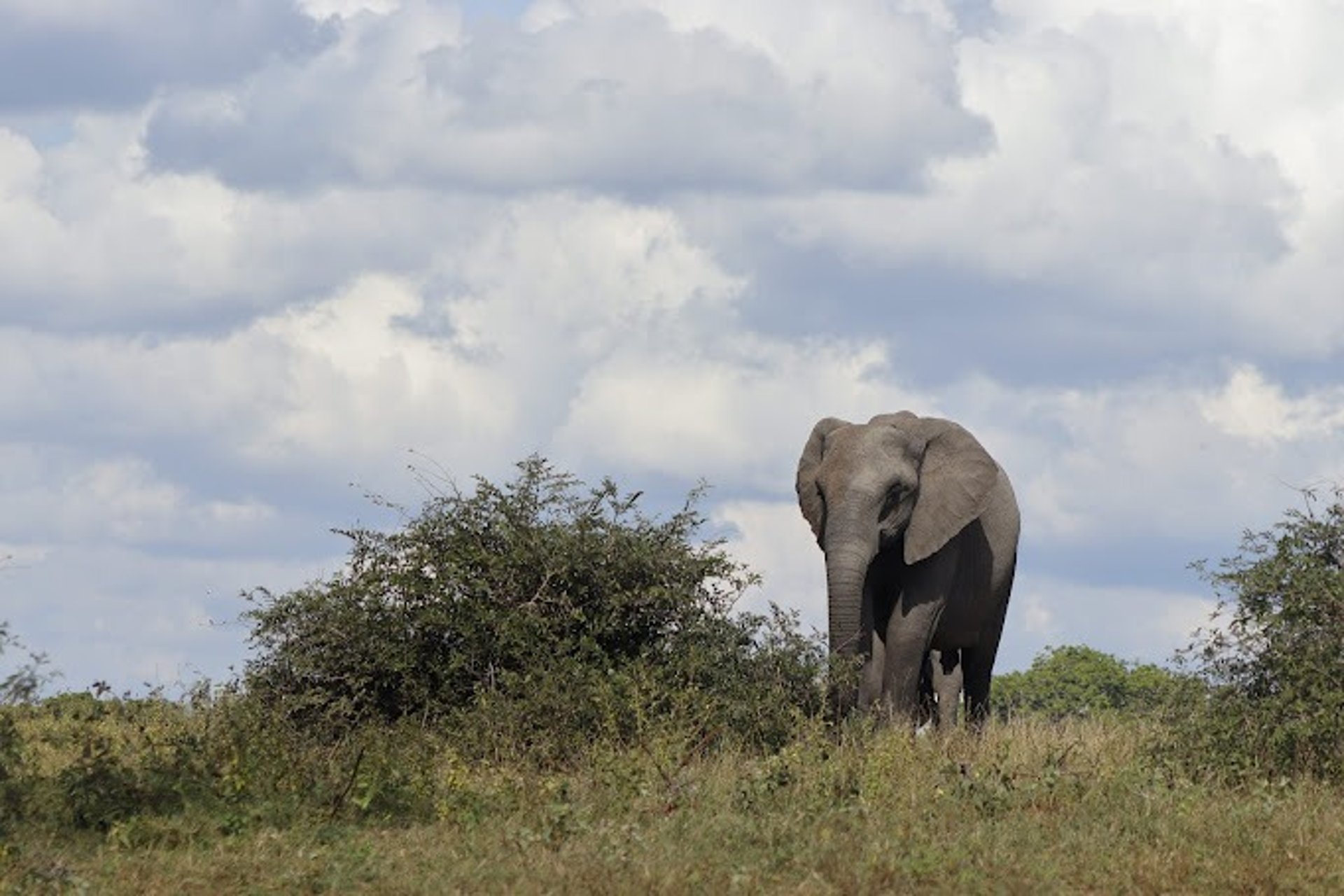
Unforgettable Adventures: Exploring Kruger National Park in South Africa
This 10 day-long itinerary takes you from the bustling streets of Johannesburg and its rich history to the awe-inspiring landscapes and wildlife of Kruger National Park, ending with the stunning views of the Three Rondavels and Blyde River Canyon.
TRAVEL STORIESAFRICA
Embarking on the Journey
When it comes to unforgettable wildlife experiences, Kruger National Park in South Africa is a top contender. Imagine yourself driving through diverse ecosystems, each teeming with life at every turn. From the bustling streets of Johannesburg, which pulse with rich cultural history, to the expansive landscapes of Kruger, you are about to embark on an adventure that's truly one for the books. Buckle up, because over the next ten days, you’ll experience some of the planet’s most spectacular natural wonders!
First things first!
You will most probably arrive in Johannesburg, a city rich in history and culture. When planning your stay in Johannesburg, opt for accommodations in central and well-secured areas such as Rosebank, Sandton, or Melrose Arch. These neighborhoods provide a variety of hotels and guesthouses to suit different budgets, from boutique hotels to upscale lodges. After a day of delving into the city’s history, these areas offer a relaxing retreat where you can dine and unwind in safe, vibrant surroundings. Whether you're savoring local cuisine or preparing for your journey to Kruger National Park, Johannesburg provides a compelling and comfortable start to your South African adventure.
Begin your day at the Apartheid Museum, one of Johannesburg's most iconic and thought-provoking landmarks. This museum chronicles South Africa’s harrowing history under apartheid, a system of institutionalized racial segregation that lasted until the 1990s. Through its immersive exhibits, including photographs, videos, and personal accounts, you'll gain a deeper understanding of the struggles and triumphs of those who fought for freedom and equality. The museum experience starts the moment you arrive: your ticket assigns you to either the “white” or “non-white” entrance, offering a visceral glimpse into the arbitrary yet devastating divisions of apartheid. Allow at least 2–3 hours to explore this sobering but essential attraction.


The museum is located near Soweto, and while exploring the area is worthwhile, it’s recommended to book a guided tour if you want to extend your visit beyond the museum to other historical sites like Vilakazi Street. This ensures not only safety but also an enriching cultural experience.
For safety and convenience, it’s best to use a ridesharing service like Uber or Bolt to get to the Apartheid Museum. Both options are reliable and widely used in Johannesburg, ensuring you can travel easily between locations.
After the museum, head to Nelson Mandela Square in Sandton, a bustling area that combines high-end shopping, dining, and a touch of South Africa’s heritage. Snap a photo with the iconic statue of Nelson Mandela that dominates the square, then enjoy lunch at one of the many restaurants offering everything from international cuisine to local specialties.


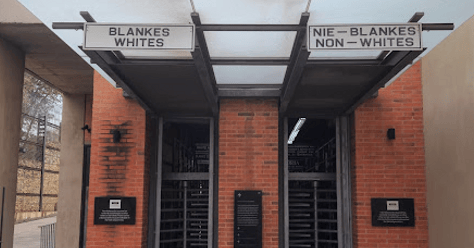

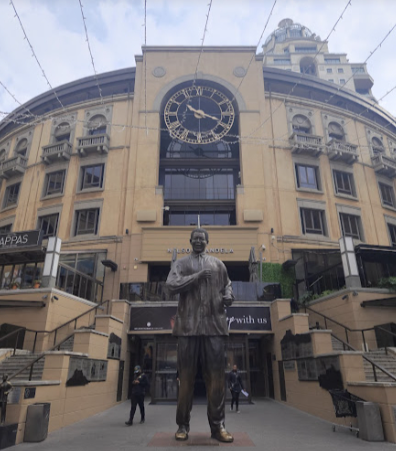



Sandton’s adjoining shopping center is also ideal for stocking up on supplies for your Kruger trip. We made a stop here to pick up essentials for our adventure, as each rest camp in Kruger offers facilities for self-catering and BBQs (called braais). The supermarket had everything we needed, from snacks to camping gear, but remember that alcohol is not sold in supermarkets—it must be purchased from a liquor store.
Here’s a quick list of items we recommend picking up:
Breakfast essentials: bread, eggs, cereal, coffee, etc.
BBQ supplies: meat (like boerewors or chicken), marinades, charcoal, firelighters, and condiments.
Snacks and drinks: bottled water, chips, nuts, and juices.
Cooking basics: oil, salt, pepper, and utensils (if needed).
A Food Lover's Paradise
If you’re a fan of meat and steak, South Africa is a dream destination. Renowned for its high-quality cuts and flavorful preparations, the country takes great pride in its meat-centric cuisine. From succulent steaks to the iconic boerewors (traditional South African sausage), the options are endless and absolutely mouthwatering. Many supermarkets, like the one we visited in Sandton, offer a wide selection of premium meats, including aged beef steaks, lamb chops, and marinated chicken, perfect for grilling during your Kruger stay.
South Africa’s love for BBQs—known locally as braais—is more than just a way to cook; it’s a cherished tradition. Whether you’re preparing a juicy steak or grilling boerewors at a Kruger rest camp, you’ll find that the flavors of South African meat are unparalleled, thanks to the country’s exceptional farming standards and rich culinary heritage. Don’t forget to pair your braai with locally made marinades, chutneys, or a side of pap (maize porridge) for an authentic South African meal.
So, stock up and indulge—whether it’s a thick ribeye steak, a rack of lamb, or simply a classic burger, you’re in for a treat. There’s no better place than South Africa to savor the art of cooking and eating meat!


Discovering Kruger's Rich Biodiversity
But first.....
Before embarking on your Kruger National Park adventure, it's essential to ensure all necessary preparations are in place. All visitors are required to pay a daily conservation fee, which varies based on residency status: South African citizens and residents pay R128 per adult and R64 per child, SADC nationals pay R257 per adult and R128 per child, and international visitors pay R535 per adult and R267 per child.
Alternatively, frequent visitors might consider purchasing a Wild Card, offering unlimited access to over 80 parks and reserves across Southern Africa for a year.
Accommodation within the park is highly sought after and must be booked in advance. This ensures you secure your preferred rest camps and allows for better planning of your route through the park. Additionally, all visitors are required to complete a Gate Registration & Indemnity Form prior to arrival. This form, which includes personal details and vehicle information, can be downloaded and filled out in advance to expedite the entry process.
For comprehensive information on entry requirements, conservation fees, and necessary documentation, visit the official SANParks website. Ensuring all paperwork is in order before your trip will facilitate a smooth entry into the park, allowing you to focus on the incredible wildlife and landscapes that await.
Nature and Wildlife: The Heart of Kruger
Upon entering the park, you will immediately feel a sense of tranquility wash over you as you drive along the winding dirt roads. The ambient sounds of chirping birds and leaves rustling in the breeze transport you away from the noise of daily life.
One of the most impressive aspects of Kruger National Park is its successful commitment to wildlife conservation. Spanning an incredible nearly 2 million hectares, the park encompasses a variety of ecosystems, including savannah, bushveld, and riverine forests. This diversity creates a perfect habitat for an estimated 147 mammal species, including the iconic Big Five: lions, leopards, elephants, rhinos, and buffalo.
Starting from Johannesburg, your drive to Crocodile Bridge Gate, one of the southernmost entrances to the park, will take about 4 to 5 hours. Along the way, you’ll encounter rolling hills, farmland, and scenic vistas—ideal for stopping and stretching your legs or snapping some photos of the picturesque countryside. Look out for local roadside stands selling fresh produce, homemade goods, and South African crafts, which make great souvenirs or road-trip snacks.


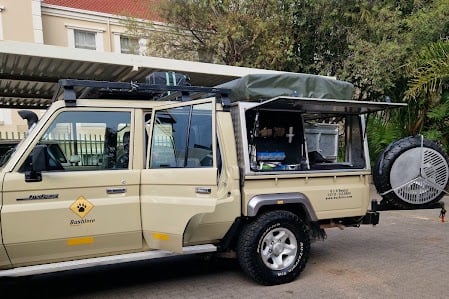

Lower Sabie Rest Camp: Your First Night in Kruger
As you approach Kruger, the excitement builds—entering the park through Crocodile Bridge Gate feels like stepping straight into a wildlife documentary. Upon arrival, make sure you check in at the gate, paying your conservation fees and presenting any required paperwork.
With everything sorted, it’s time to start your drive toward Lower Sabie Rest Camp, located about 35 km from the gate. The route itself is part of the adventure, as it’s teeming with wildlife! On our first drive, we immediately encountered impalas, zebras, and even a herd of elephants crossing the road. Keep your eyes peeled and cameras ready; you never know when you might spot something extraordinary.
While driving within the park, it’s essential to remember that Kruger has strict speed limits in place to ensure the safety of both animals and visitors. The speed limit on tar roads is 50 km/h, and on gravel roads, it’s 40 km/h. These limits allow you to drive safely while soaking in the beauty of the park.

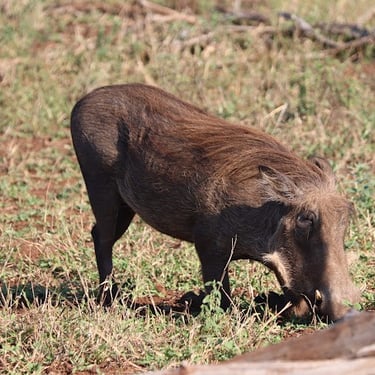
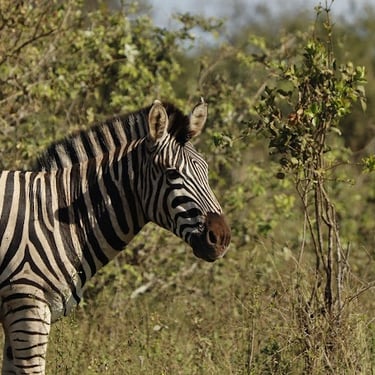
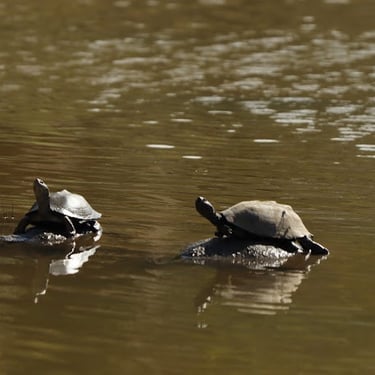
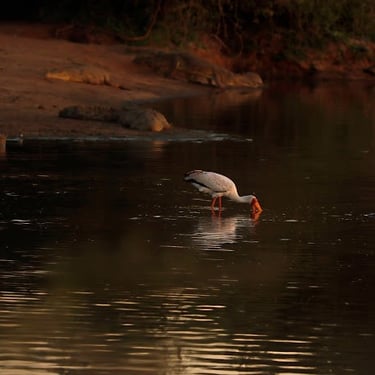
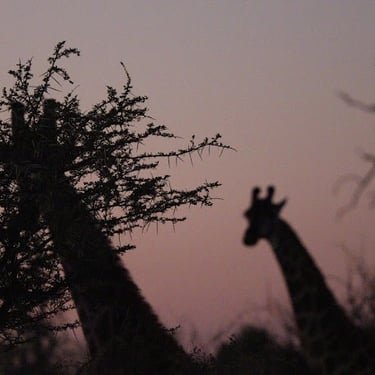
The Camping Experience: A Taste of the Wild
Camp Access Regulations
Kruger National Park has strict regulations on when visitors can enter and exit camps, ensuring both safety and wildlife protection. Camps are open from 5:30 AM (or at sunrise) until 6:00 PM (or at sunset), and no driving is allowed after hours due to the risk of encountering dangerous wildlife.
To explore after dark or during early morning, there are guided tours available, where experienced rangers lead the way, ensuring safety while you enjoy the wildlife at the best times of day. Always return to your camp before closing time to stay within the park's rules and ensure your safety.
Camping in Kruger National Park offers an immersive experience that brings you closer to nature. The park features well-maintained campsites equipped with basic amenities, allowing a comfortable stay while enjoying the great outdoors.
Arriving at Lower Sabie Rest Camp, you’re greeted by stunning views of the Sabie River, a hotspot for wildlife activity. The camp is one of the most popular in Kruger, thanks to its excellent location and facilities. We quickly settled into our cozy accommodations and headed to the riverside deck to take in the golden hues of sunset. Hippos, crocodiles, and even the occasional lion can often be seen from the camp, making it a thrilling spot to relax.
The thrill of unexpected wildlife encounters adds excitement to your camping trip. You might spot monkeys frolicking around your tent or hut or elephants crossing through your campsite — experiences you won't find anywhere else.
Make sure you don't leave any rubbish or food outside for long... The monkeys won't hesitate to steal your treats...
We prepared a delicious braai with the meat and snacks we’d picked up in Johannesburg, savoring the flavors while listening to the sounds of the bush. Afterward, we joined a guided night drive, an unforgettable experience where we spotted nocturnal animals like hyenas and a majestic leopard. Lower Sabie is the perfect base for your first night in Kruger, combining excellent wildlife sightings with a serene atmosphere.
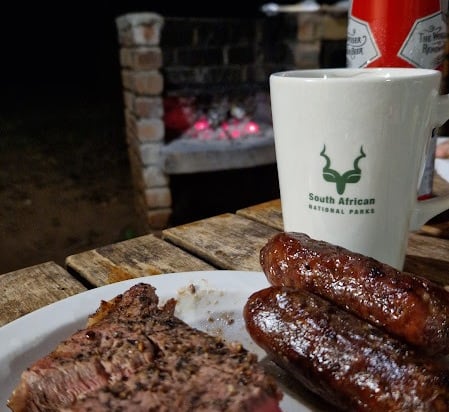

The Beauty of Sunrise in Kruger
A sunrise in Kruger National Park is pure magic. As the sky shifts from deep indigo to soft orange and pink, the landscape comes alive. The air is fresh, and the sounds of nature fill the silence—birds calling, lions and hyenas stirring in the distance. The golden light casts long shadows across the savannah, and dew sparkles on the leaves. The early morning hours are often the most rewarding for game drives, as animals tend to be more active, giving you a better chance to spot the elusive Big Five.
On our very first drive in Lower Sabie, we were lucky enough to spot a couple of lions lounging in the middle of the road. They were calm and carefree, embodying the serenity of the park. It's crucial to remember that you are a guest in their home. When approaching wildlife, be respectful: drive slowly, stay quiet, never stand on the car, avoid honking, and don’t try to get their attention. These animals are wild, and while they may seem relaxed, they can easily become dangerous if they feel threatened. Always keep in mind—you are a visitor, and they are in charge.
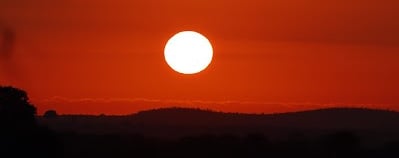

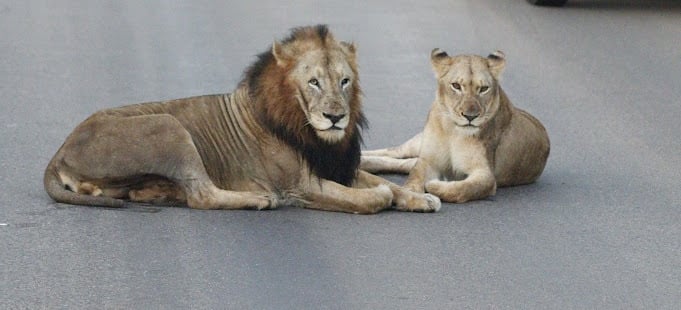

After six hours on the road, we had already seen a wide variety of animals—zebras, giraffes, buffalo, and plenty of antelope—but still no cheetahs, leopards, or rhinos. The search continued, and while we hadn’t ticked off every animal on our list, the journey was filled with unforgettable moments.
One of the most memorable sights was a pair of elephants engaged in a brief but intense tug-of-war, their massive tusks locked as they fought over territory or a mate. The sheer power of these creatures was incredible to witness, reminding us of their strength and dominance in the wild. Not far from there, we came across a baby elephant happily running around on the road, raising its trunk in the air in playful excitement. It was an adorable sight, as the little one was full of energy, oblivious to the vehicles around it.
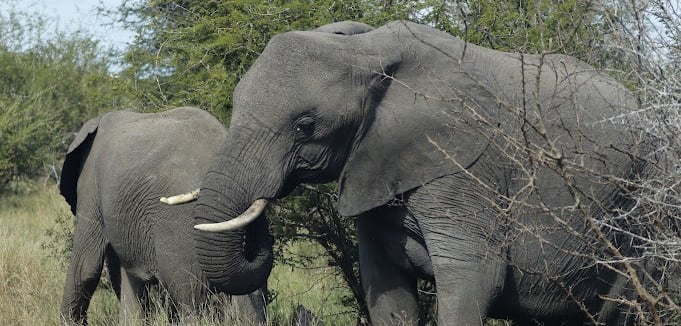

3 Days of Adventure in Lower Sabie
We stayed in Lower Sabie for three more nights, and our routine quickly became a relaxing rhythm. Each day, we spent our mornings on exciting game drives, spotting new wildlife and soaking in the breathtaking landscape. After returning to the camp, we would head to the riverside tavern, where we’d sip on tea and unwind while watching the hippos and crocodiles bask in the sun. The afternoon would often be spent preparing a delicious BBQ (or braai) before resting up for another early start the next day. The peaceful sounds of the river and the occasional lion roar in the distance made it the perfect place to relax and recharge.
Here are some suggestions that we did during our stay in Lower Sabie, and they were totally amazing!
Day 1: Southern Loop and Sabie River Views
We kicked off our adventure with a drive along the S28 (Southern Loop). This road is a prime spot for wildlife, and we were not disappointed! It’s known for great sightings of the Big Five, including lions, elephants, and buffalo, plus the occasional cheetah or wild dog. We spent hours taking in the wildlife, and the landscape, from wide-open plains to riverine forests, was just stunning.
In the afternoon, we drove along the S114, which follows the Sabie River. This route was incredible for animal watching, with plenty of hippos and crocodiles sunning themselves along the banks. The birdlife was equally impressive, and the river itself created a beautiful backdrop for some of the best nature photography we’ve ever captured. The views, especially during golden hour, were absolutely mesmerizing.
Day 2: The Gudzani Loop and Off-the-Beaten-Path Drives
On our second day, we ventured down the quieter S39 (Gudzani Loop). The drive took us through dense bush and open areas, and we were lucky enough to spot some magnificent lions basking in the early morning sun. The Gudzani Dam was a highlight—perfect for birdwatching and a peaceful spot to see wild dogs and buffalo. The area has a much more serene vibe, making it an ideal route if you're looking for a more tranquil experience.
Later in the day, we explored the S130 road, a less-traveled path through varied landscapes. This route brought us closer to giraffes, rhinos, and zebras, and was a great chance to enjoy the beauty of Kruger without the crowds. The peacefulness of the drive made it feel like we had the park all to ourselves, which was such a special feeling.
Day 3: Nkhulu Loop and Sabie River Drive
For our final day, we drove the S21 (Nkhulu Loop), which offered a mix of dense bush and open areas. This loop was great for spotting warthogs, zebras, and giraffes, and we even had a few close encounters with elephants. One of the highlights of the loop was the Nkhulu Picnic Site—a great spot to relax and watch the wildlife surrounding the area. We also saw some lions resting in the shade, a perfect way to end our game drive.
In the afternoon, we took the H4-2 route along the Sabie River. This road runs parallel to the river, offering a mix of wildlife sightings and breathtaking views. We spotted more elephants and buffalo, and even saw a giraffe walking gracefully along the water’s edge. The river itself was a peaceful setting, and we were treated to an incredible sunset over the water, making it the perfect way to wrap up our time in Lower Sabie.
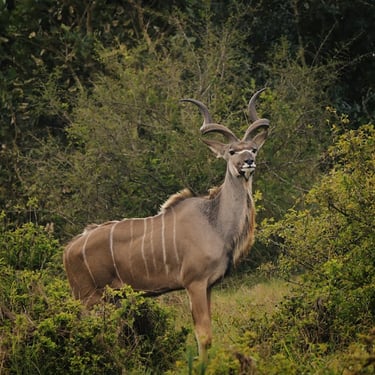
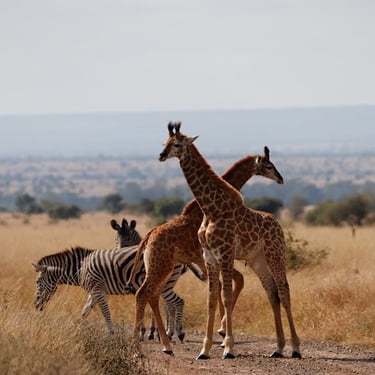
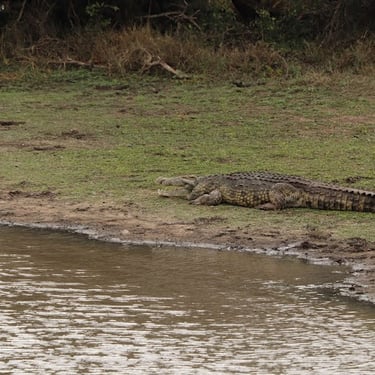
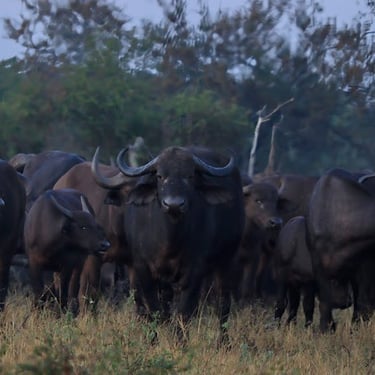
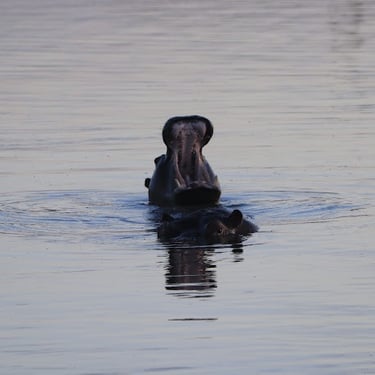

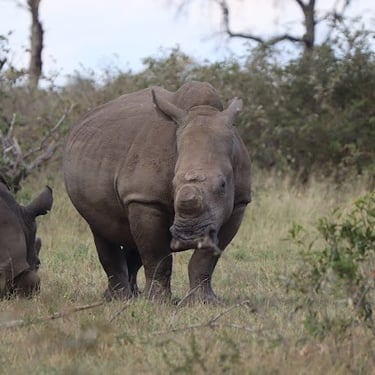
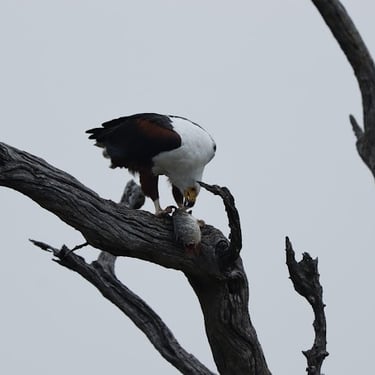
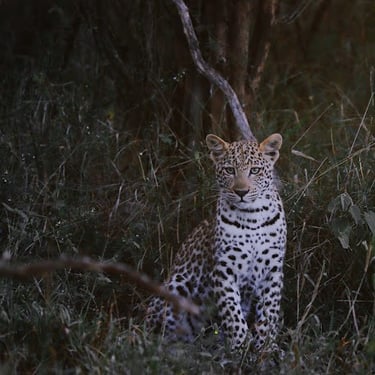
On to Olifants: A Scenic Journey with a Stop in Satara
After three unforgettable days in Lower Sabie, it was time to head north to Olifants Camp, another stunning destination in Kruger National Park. We made a leisurely drive, with a stop at Satara Rest Camp for lunch. Satara, known for its open plains and fantastic predator sightings, was the perfect place to break up our journey.
The drive from Lower Sabie to Olifants was a true testament to Kruger’s vast diversity. As we moved further north, the landscape shifted dramatically. The lush, riverine environment around Lower Sabie gave way to the more arid, bushveld terrain near Satara, where the plains seemed to stretch on forever. The change in scenery was striking—what began as dense thickets and riversides transformed into wide-open savannahs dotted with acacia trees. We were able to spot a variety of wildlife, from zebras grazing in the grasslands to giraffes and buffaloes in the distance, perfectly framed by the changing landscape.
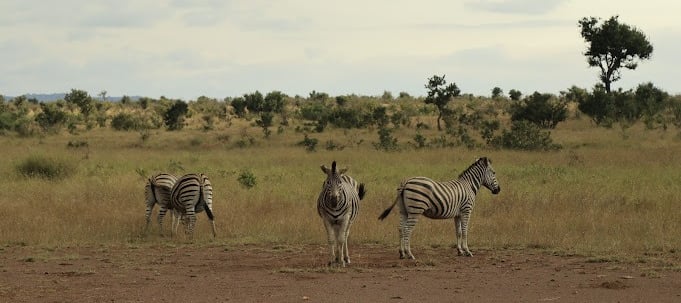

After a relaxing lunch in Satara, we continued our journey northward. As we approached Olifants, the transformation continued. The landscape became even more rugged, with rocky hills and dramatic views of the Olifants River below. The contrast between the flat plains of Satara and the elevated views at Olifants was truly breathtaking. It felt like we were entering a whole new world within Kruger, each corner revealing more of the park's wild beauty. By the time we arrived at Olifants, we were in awe of how the scene had changed so dramatically—and we couldn’t wait to see what adventures awaited us next.
Here are some suggestions that we did during our stay near Olifants, and they were totally amazing!
Day 1: The Olifants River Views and Surrounding Wildlife
We started our first day by driving along the S93 road, which winds through the Olifants River area. The scenery here was simply stunning, with the river flowing below and rocky hills in the distance. The route is fantastic for spotting a variety of animals, including elephants, buffalo, and giraffes. The highlight of the drive was coming across a herd of elephants near the riverbank, calmly drinking and cooling off in the water. It’s moments like these that make Kruger so magical.
In the afternoon, we explored the H7 road, known for its rich wildlife sightings.
We spotted wildebeest, giraffes, and impalas grazing in the open plains, and we were thrilled to catch sight of a lion resting in the tall grass, barely visible in the golden light. The route was quieter, making it the perfect time to enjoy the beauty and tranquility of Kruger. After the drive, we relaxed at the camp, taking in the incredible views from Olifants Rest Camp, where you can spot wildlife along the riverbanks while sipping on a cold drink.
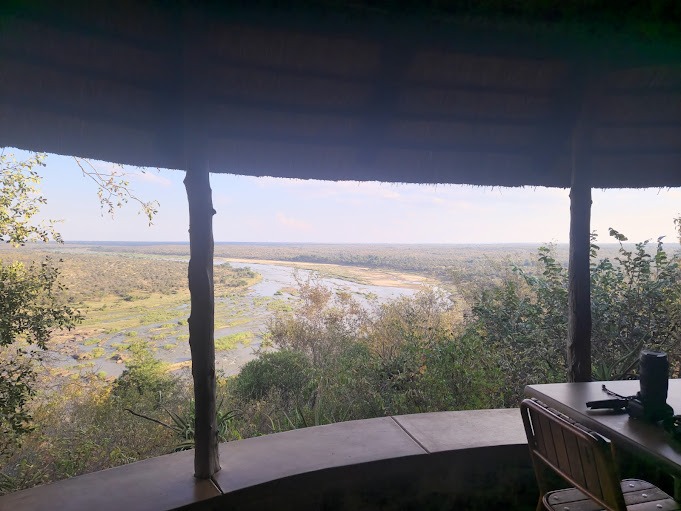



Day 2: The S44 Loop and the Hidden Gems of Kruger
On our second day, we decided to explore the S44 loop, a popular route known for its diversity of animals and changing landscapes. Starting early in the morning, we were treated to stunning views of the bushveld as the sun rose, casting golden light across the savannah. The route took us through dense bush, with occasional open patches where we saw large herds of elephants and buffalo. We even spotted a pair of hyenas near a waterhole, cautiously observing us as we slowly passed by.
Later in the day, we ventured to the S92 road, which is a hidden gem that runs alongside the Olifants River. This quieter route is perfect for those seeking a more peaceful experience. We were lucky enough to witness a leopard stalking its prey along the riverbank, a rare and thrilling sight. The river itself offered opportunities for birdwatching, and we saw a variety of species, including kingfishers and eagles. The scenery along this road was equally captivating, with the lush greenery of the river contrasting with the surrounding dry bushveld.


Day 3: The S46 Loop and the Rocky Outcrops
For our final day, we explored the S46 loop, a route known for its sweeping views and rocky outcrops. This was one of the more rugged parts of Kruger, and it offered a dramatic change of scenery from the previous days. We drove through rolling hills and rocky terrains, spotting kudu and impalas in the thick bush, and giraffes grazing on the tall trees. The landscape was incredibly diverse, offering a real mix of habitats.
The highlight of the day came when we spotted a pride of lions resting under the shade of an acacia tree, just off the side of the road. We parked at a safe distance and watched as the lions lazily stretched out, clearly enjoying the warm afternoon sun. After spending time with the lions, we made our way to the Olifants River Viewpoint, a must-see spot that overlooks the river below. The view was breathtaking, and we took some time to relax and reflect on our incredible adventure. Watching the sun set over the river was the perfect way to end our three days near Olifants.


Next adventure - Blyde River Canyon
We left Olifants Camp early to make the most of our first day on the Panorama Route. After exiting Kruger National Park through the Orpen Gate, we took the scenic drive through the R527 road, heading toward the Blyde River Canyon. The change in scenery was immediate—the dry bushveld of Kruger gave way to lush green hills and towering cliffs, signaling the start of our journey through one of the most beautiful regions of South Africa.
Day 1: From Kruger to Blyde River Canyon and Graskop
Our first stop was the Three Rondavels Viewpoint at the Blyde River Canyon, just before lunch. The view was absolutely stunning, with towering peaks resembling traditional rondavel huts, surrounded by the lush canyon floor. From here, we could see the meandering Blyde River winding its way through the canyon, creating an almost surreal landscape. The views were jaw-dropping, and we spent some time here taking in the scenery and snapping photos.
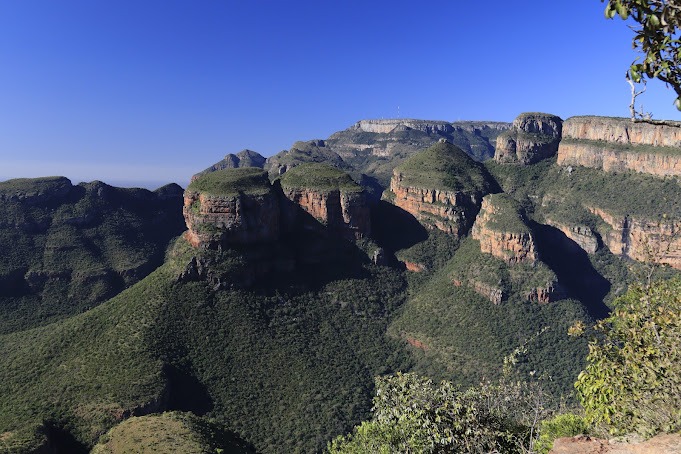

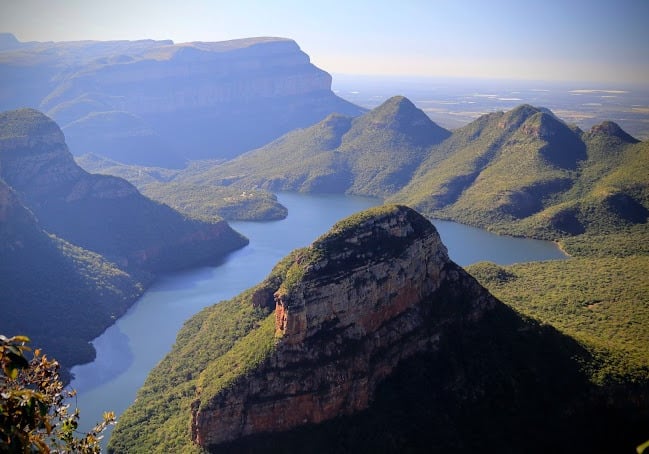

Next, we headed to Kadishi Tufa Waterfall, a short hike to a beautiful natural wonder formed by mineral-rich spring water. The waterfall was stunning, and the tranquil setting allowed us to take in the sounds of nature while cooling off from the warm day.
Afterward, we explored the Blyde River Canyon Lookout at World’s End for even more panoramic views of the canyon. The vastness of the landscape was truly humbling, and we couldn’t help but feel small standing at the edge of such a dramatic drop. We then made our way to Bourke’s Luck Potholes, where we marveled at the unique rock formations created over thousands of years by water erosion.
By late afternoon, we drove the short 40-minute journey to Graskop, a small town nestled in the heart of the Panorama Route. After checking into our accommodation, we took a stroll around town and settled in for a relaxed evening, ready to explore even more of the route the next day.
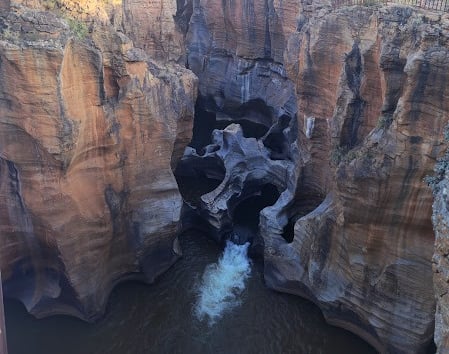

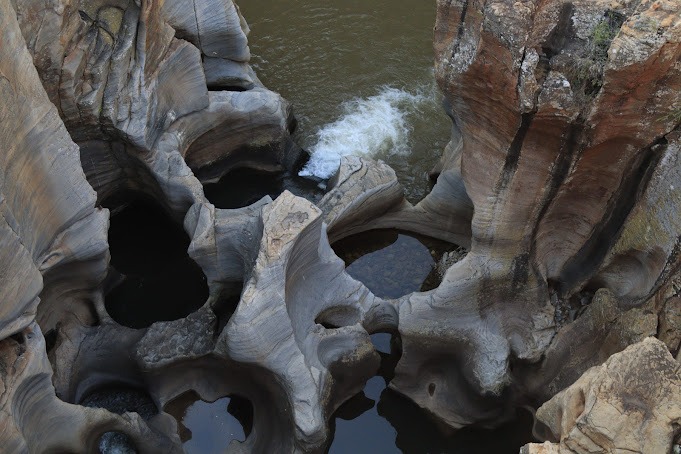

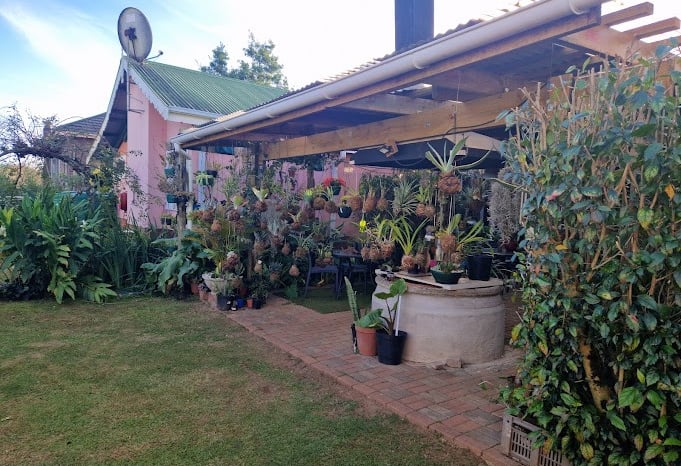

Day 2: Waterfalls, Viewpoints, and the Journey Back to Johannesburg
We woke up refreshed and ready to continue our exploration of the Panorama Route. Our first stop of the day was Lisbon Falls, located just a short drive from Graskop. This stunning waterfall is one of the tallest in the area, with water cascading down from a height of over 90 meters. The surrounding forest created a peaceful atmosphere, and we spent a little time here soaking up the beauty of the falls.
Next, we visited Berlin Falls, just 10 minutes from Lisbon Falls. This waterfall was equally impressive, with the water tumbling down into a deep pool below, surrounded by lush vegetation. After snapping some photos, we continued our journey along the route, making our way toward Mac Mac Falls. These twin waterfalls are another highlight of the route, and we took a short walk along the paths around the falls to get up close to the water.
We then drove to God’s Window, one of the most famous viewpoints on the Panorama Route. The views here are simply spectacular, stretching all the way to the Lowveld and even Kruger National Park on a clear day. The landscape was dotted with forests, valleys, and distant mountains—truly a sight to behold. We couldn’t resist taking in the view for a little while before moving on to our next stop.
Just a short drive from God’s Window is The Pinnacle Rock, an iconic rock formation that rises sharply from the valley floor. The views here were equally magnificent, offering a dramatic perspective of the surrounding landscapes. From this viewpoint, you can really appreciate the depth and grandeur of the Drakensberg Escarpment.
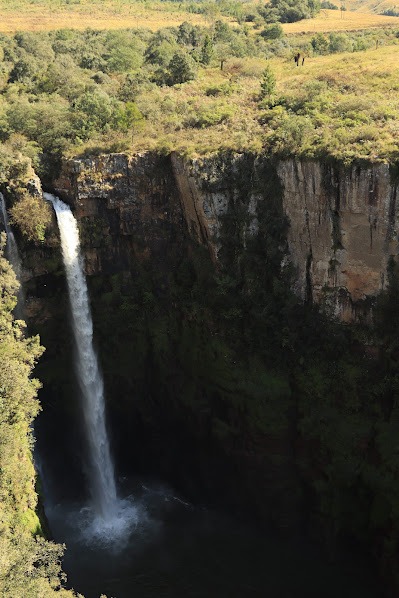

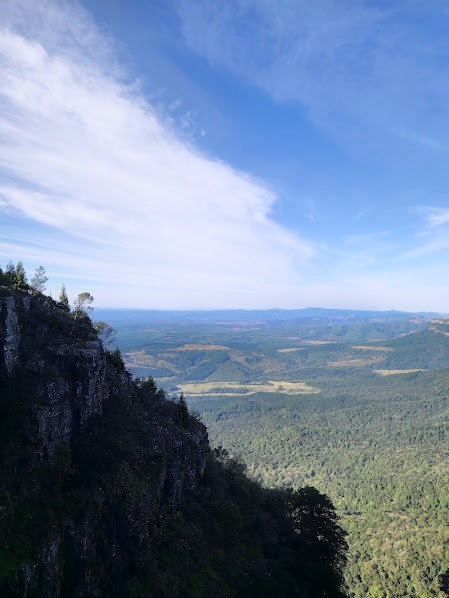

With a day full of waterfalls, cliffs, and expansive views, we made our way back to Graskop for a quick lunch before hitting the road to Johannesburg. The drive from Graskop to Johannesburg took about 4–5 hours, but the memories of the incredible landscapes we’d experienced over the past two days made the journey feel much shorter
Planning Your Visit: Tips for an Unforgettable Experience
To maximize your visit to Kruger National Park, keep the following tips in mind:
Best Time to Visit: The dry winter months from May to September are excellent for wildlife viewing since many animals gather around water sources.
Accommodation Options: Choose between camping or staying in park lodges. Booking in advance is essential, especially during high tourist seasons.
Self-Drive vs. Guided Tour: While self-driving offers flexibility, guided tours provide extensive insights and spot locations you might miss on your own.
Pack Accordingly: Bring insect repellent, sunscreen, binoculars, and ample refreshments. Dress in layers as mornings can be chilly, but temperatures rise during the day.
Stay Connected: Consider downloading the official Kruger National Park app for maps, updates, and points of interest.
Preparing ahead of time ensures your memories of Kruger National Park are filled with wonder, adventure, and respect for the natural world.
Respecting the Wildlife: A Commitment to Conservation
While you embark on your journey, remember the importance of responsible wildlife viewing. Kruger National Park emphasizes the need for a balance between conservation and visitor experience. Always adhere to park rules, stay inside your vehicle during game drives, and respect wildlife and their habitats.
The park is dedicated to conservation efforts, evident in its anti-poaching initiatives and educational programs that raise awareness among local communities about wildlife preservation. Engaging with these programs deepens your understanding of the park's mission.


In summary, based on my experience, here’s an 9-day itinerary for one of the most stunning adventures you can have in South Africa. From the iconic wildlife of Kruger National Park to the jaw-dropping beauty of the Panorama Route, this journey offers the perfect blend of nature, wildlife, and scenic landscapes.
Day 1: Arrival in Johannesburg
Morning: Arrive in Johannesburg. Spend the day exploring the city, visiting the Apartheid Museum and Nelson Mandela Square.
Evening: Stay overnight in Johannesburg. Consider visiting Sandton City for shopping and dinner, or relax and prepare for your journey ahead.
Day 2: Johannesburg to Lower Sabie (Kruger National Park)
Morning: Drive to Crocodile Bridge Gate for entry into Kruger National Park (4–5 hour drive).
Afternoon: Arrive at Lower Sabie Rest Camp. Start your wildlife adventure with a short game drive on the way to the camp.
Evening: Relax by the river at the Lower Sabie Riverside Tavern, enjoy a BBQ, and prepare for an early morning safari.
Day 3-4: Exploring Lower Sabie
Morning: Early morning game drives from Lower Sabie to spot the Big Five. Consider a guided safari for deeper insight.
Afternoon: Rest and relax at the camp or explore surrounding roads and waterholes.
Evening: Another evening of BBQs, sundowners, and preparing for the next day's adventure. The rhythms of wildlife will continue to enrich your stay.
Day 5: Lower Sabie to Olifants
Morning: Drive north through Kruger National Park to Olifants Rest Camp, with a stop at Satara for lunch.
Afternoon: Continue the drive to Olifants, where you'll experience beautiful views of the Olifants River and surrounding landscapes.
Evening: Enjoy dinner overlooking the river and prepare for another exciting game drive tomorrow.
Day 6-7: Exploring Olifants
Morning: Take early morning game drives from Olifants. The northern part of Kruger offers a different terrain and wildlife compared to the southern sections.
Afternoon: Relax at Olifants Rest Camp or visit nearby viewpoints to spot more wildlife along the river.
Evening: Spend the evenings in camp enjoying the peaceful surroundings or venture out to catch a sunset safari.
Day 8: Olifants to Blyde River Canyon and Panorama Route
Morning: Depart Olifants Camp for the Blyde River Canyon (about 3 hours). Visit iconic viewpoints like Three Rondavels and Kadishi Tufa Waterfall.
Afternoon: Explore more of the Panorama Route, visiting Bourke’s Luck Potholes and God’s Window for stunning views.
Evening: Arrive in Graskop and stay overnight at a charming family accommodation. Rest up for the following day's scenic exploration.
Day 9: Exploring the Panorama Route
Morning: Visit Lisbon Falls, Berlin Falls, and Mac Mac Falls. Enjoy the natural beauty of these stunning waterfalls.
Afternoon: Explore The Pinnacle Rock and take in panoramic views of the Lowveld from God’s Window.
Evening: Head back to Johannesburg (about 4-5 hours), reflecting on your journey through South Africa’s most incredible sights.
So gather your gear, hit the open road, and get ready to step into the wild heart of South Africa. An unforgettable journey into nature awaits you in Kruger National Park!


